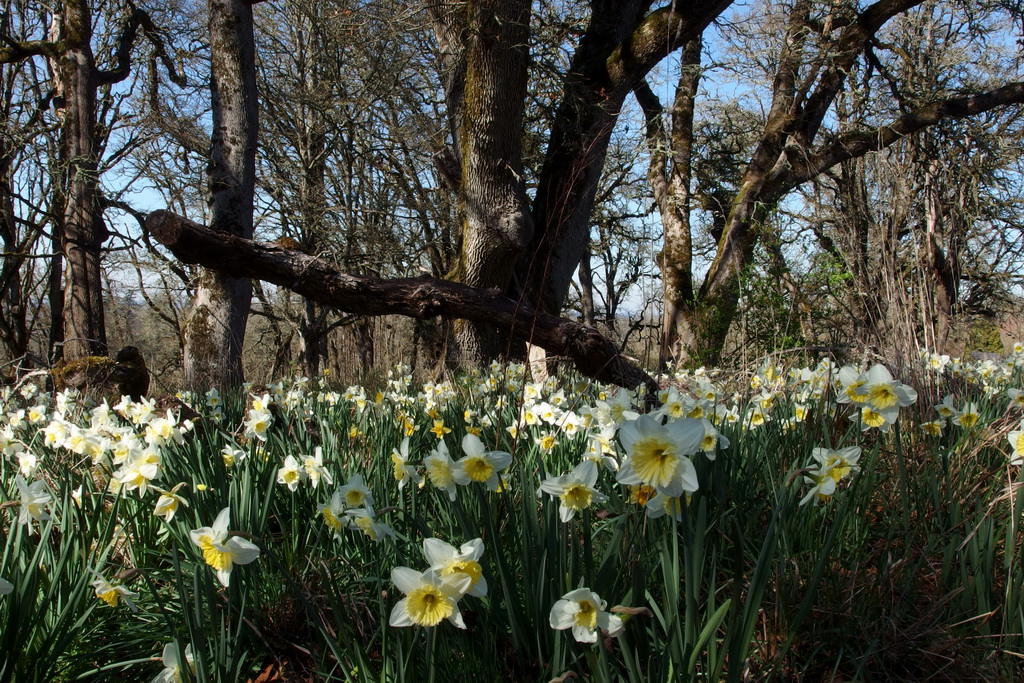 |
| Naturalized Narcissus under Oregon White Oaks |
As a youngster in western Oregon I did not pay much attention to the flora around me. But I do remember the wonderful, colorful daffodils coming up in spring, like little flags waving in celebration. We moved away when I was six, to a totally different climate and geography where there were no spring bulbs. It was not until 25 years later when we visited Oregon at the height of the bloom that I realized what I missed. It rang up a happy childhood memory, kind of like the big ice cream cones my Grandmother used to give us!
 |
| Landscaped Daffodil Island |
The daffodil name has come to mean one of about 50 species in the Narcissus genus. None are native to the Northwest, and as you can imagine, have been extensively hybridized over the years. Linnaeus first described Narcissus as a genus in 1753, but the ancient Greeks were familiar with the plant as well. And if you remember your Greek mythology, you'll know that Narcissus was a good looking fellow who was so taken with his reflection in a pond that he was unable to save himself from the waters.
That story does have some truth in that all members of the genus are highly toxic and can be poisonous to humans and animals alike. This would explain why the deer and gophers leave them alone around our place!
Small daffodils or large cat?
Here in our corner of the world, there are some "wild daffodils" that have become naturalized. These are Narcissus pseudonarcissus and look similar to many of the hybridized products you can purchase at the local garden shop. They are native to western Europe but are naturalized all over the northern hemisphere. You've probably seen them growing in natural fields, along country roads, or on hillsides.
 |
| All Narcissus have six petals and a trumpet! |
Although we love "daffodils" in general and have about a dozen different varieties growing around our property, my favorite is the Narcissus poeticus, sometimes called Poet's Daffodil or Pheasant's Eye. It is native to central Europe. This daffodil is prized for its oil, which is used in high end perfumes. The plants are cultivated in France and the Netherlands for that purpose.
 |
| Poet's Daffodil |
As you can imagine, growing and selling daffodils is big business around the world. Thousands of cultivars have been developed for our backyard gardens. I suppose no one is going to get tired of celebrating the end of winter, so new varieties of these bulbs will continue! There are numerous daffodil festivals in our area (Amity, Junction City, Pulyallup) and the American Daffodil Society has reams of information about all things Narcissus.
In closing, I could not find a clear history of the daffodil name as it applies to Narcissus. Perhaps because the name Narcissus has some baggage (the Greek legend and the derived narcissism word), a different common name was chosen. Daffodil was also a name given to girls in the 1800's but fell out of favor due to the ease of shortening it to "Daffy."


No comments:
Post a Comment